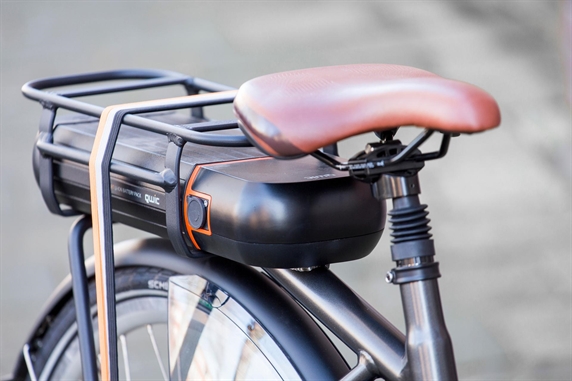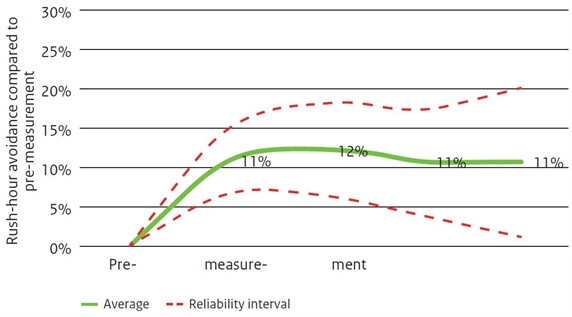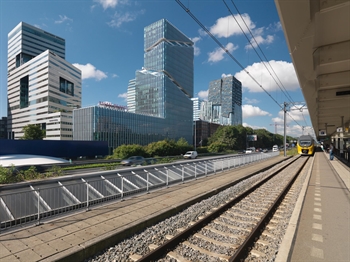Fact sheet Employers’ approach
An employers’ approach involves bringing together and inspiring employers in a particular area.
This includes:
- supporting and encouraging employers to change their mobility policies
- deploying employers to recruit participants for incentive measures, and
- connecting employers with each other and the authorities to learn from each other and work better together
Effects achieved are often the result of a combination of these three types of activity. The employers’ approach is not a stand-alone 'measure', but is often used in combination with bicycle incentive projects, for example. It can be seen as a precondition for the success of such measures.

There are existing employer networks/approaches in almost all key economic areas. For this reason it is advisable to connect with these as in the case of IJmond Bereikbaar, when the Velser tunnel was closed. Deploying an employers’ approach as a measure is therefore fundamentally different from, for example, a stand-alone rush-hour avoidance project (see the Rush-hour avoidance projects fact sheet). The great strength of an employers’ approach is precisely to bring together and maintain a network (see case study of the Employers’ approach).
The goal of the authorities is usually to stimulate smart and sustainable travel among employees and visitors; for participating employers, the focus is often on sustainability and vitality. The employers’ approach can play a role in addressing both structural and temporary bottlenecks in accessibility. Employers often feel the urgency, because there are major consequences for their accessibility.
A mobility broker is often used for contact between the authorities and employers. The tasks of a mobility broker include recruiting employers, advising employers on the possibilities of smart and sustainable mobility, and providing feedback on employers' needs to the relevant authorities.
Accessibility effects
The effects of the employers’ approach are almost impossible to measure; the contribution to the success of other (incentive) measures often remains invisible, while it is impossible to be sure that an adjustment in travel allowances, for example, has been achieved through an employers’ approach.
Nevertheless, in the context of the Optimising Use programme, it has been estimated that employers’ approaches in various regions produce on average around 1,800 instances of rush-hour avoidance per day. Of course, there is considerable variation depending on the type of area, number and type of employers, and available budget. On average, 42,000 employees were recruited per region. Employees of an employer participating in the employers’ approach programme achieved an average of 0.04 instances of rush-hour avoidance per day.
| Average Scope | Bandwidth | |
|---|---|---|
| Employers involved | 100 | 15-300 |
| Employees involved | 42,000 | 6,500-71,000 |
| Instances of rush-hour avoidance per day | 1,800 | 147-3,300 |
| Instances of rush-hour avoidance per employee per day | 0.04 | 0.02-0.05 |
| Instances of rush-hour avoidance per employer per day | 18 | 10-56 |
Most rush-hour journeys were replaced by journeys by bicycle or e-bike (56%) followed by working at home (17%). The average length of rush-hour avoidance journeys was 18 kilometres. Of course, the effect on a case-by-case basis depends heavily on the measures taken.

Long-term effects
Long-term effects also depend on the type of measures that are being deployed. If the focus is on structural changes in organisations' policies, the impact is more sustainable than when the focus is on participation in temporary campaigns and incentive projects (with the exception of bicycle reward projects, which often also have a structural impact, see the Bicycle reward projects fact sheet). The figure below shows instances of rush-hour avoidance by commuters in Maastricht whose employers participate in the Maastricht Bereikbaar employers’ approach [1]. The figure shows that the effect of the employers’ approach in this region has probably not diminished from one to three years after commuters have actively participated in the programme. This conclusion is no more than an indication since it concerns only one region.

Sustainability effects
Based on the distribution of selected alternatives described above and on an average journey length of 18 km, the following sustainability effects per instance of rush-hour avoidance can apply as a rule of thumb:
| CO2 | NOx | PM10 |
|---|---|---|
| 3.2 | 0.0037 | 0.00041 |
Variables with an impact on effects
Involving employers in solving accessibility problems is most successful if there is a great sense of urgency. This may be due to road works, but also sustainability or the health of employees can be the drivers for employers.
The most effective measures for achieving rush-hour avoidance, certainly in the long term, are measures that employers take to change their mobility policy (this may be different for other purposes). Within this category, the top three most effective measures are:
- adjusting travel allowances
- reducing parking space / increasing parking rates
- allowing flexible working in terms of time and place
Deploying employers as intermediaries for government incentives (for example recruiting participants for a bicycle incentive programme through employers) has a smaller effect in the long term. In the short term, however, this type of deployment of employers has a faster effect. This can therefore be important in the case of temporary bottlenecks due to large-scale road works. It is important that employers are relieved of work as much as possible when deploying bicycle incentives, for example.
One important success factor in an employers’ approach is timing. Both employers and employees are more receptive to travelling differently following a move to a new location or in the case of large-scale road works. These are times when people reconsider their travel behaviour and thus offer additional opportunities for effectively deploying an employers’ approach.
Another aspect is the duration of an employers’ approach. Experience with employers’ approaches shows that, on average, structural adjustments in employers' policies are only achieved after two to three years. On the other hand, recruiting employees for incentive projects often constitutes a quick fix.
Costs (including VAT)
The cost of an employers’ approach varies greatly on a case-by-case basis. Overall, the employers’ approaches under Optimising Use cost between €2 and €7 million (for a period of about three years). Assuming 1,800 instances of rush-hour avoidance per day over a period of three years, the cost-effectiveness is about €6 per instance of rush-hour avoidance.
Variables affecting costs:
- the number of years in which the employers’ approach is deployed
- the extent to which employers are relieved of work
- what is expected of employers in terms of time and money commitment
- the type of measures used in the employers’ approach
- the intensity of contacts with employers
- the extent to which an existing, successful employers’ approach can be built on in a region
More information
See https://wegwijs-beterbenutten.nl/samenwerking-met-werkgevers
Sources consulted
- Geclusterde effectmeting Forenzen 2016 Maastricht (Clustered Measurement of Effects, Commuters, 2016, Maastricht) (January 2017)
- Effectmeting U15 (U15 Effect Measurement) (July 2017)
- Effectmeting Haaglanden (Haaglanden Effect Measurement) (January 2017)
- Effectmeting werkgeversgerichte aanpak Assen (Measurement of Effects, Employers’ Approach, Assen) (January 2017)
- Effectmeting werkgeversgerichte aanpak Groningen Bereikbaar (Measurement of Effects, Employers’ Approach, Groningen Bereikbaar) (October 2016)
Rules of thumb
- effect on accessibility: 1,000-3,000 rush-hour journeys avoided per day
- effect on sustainability: reduction of 3.2 kg of CO2 per instance of rush-hour avoidance
- costs: approximately €6 per instance of rush-hour avoidance
